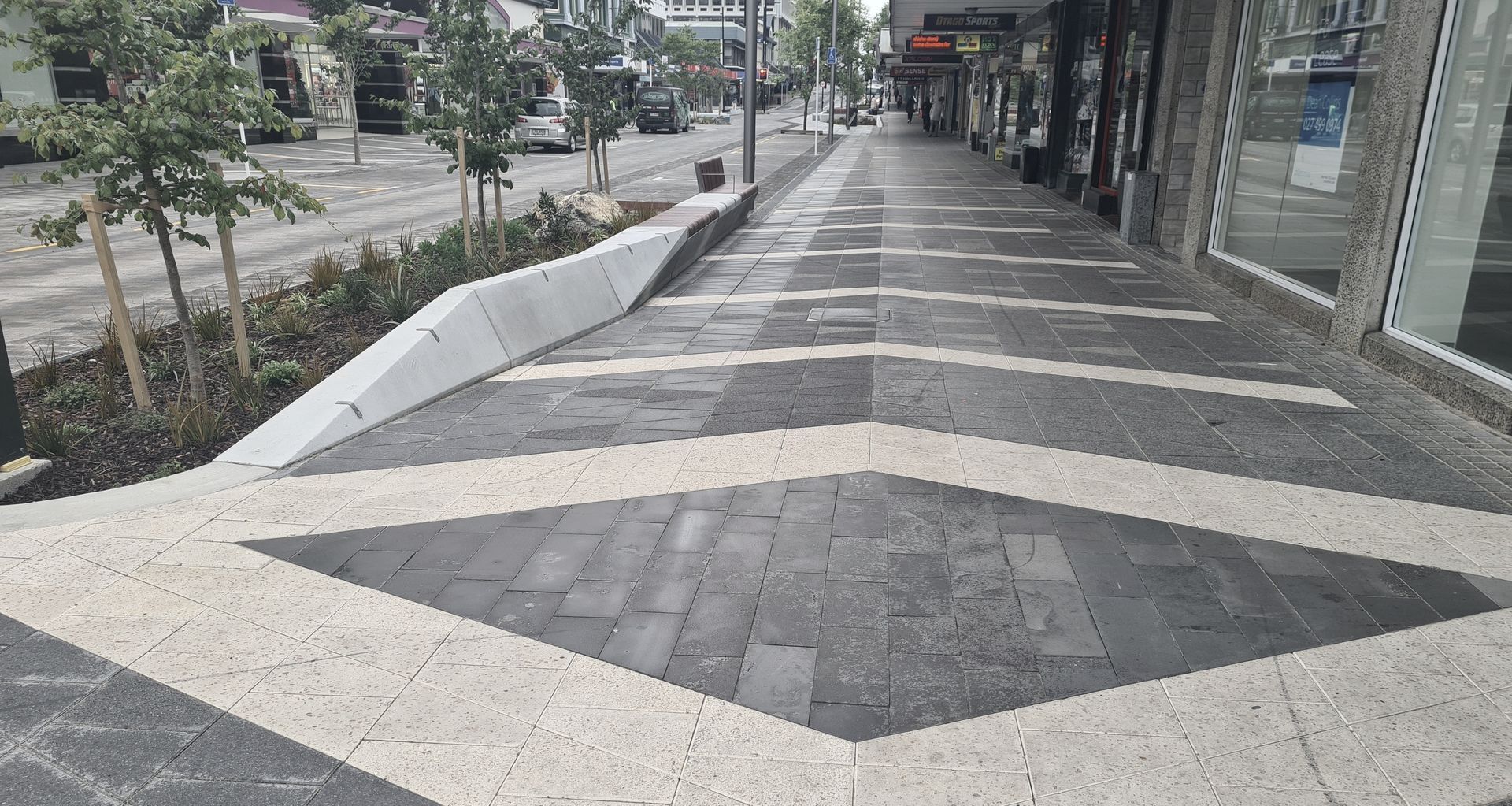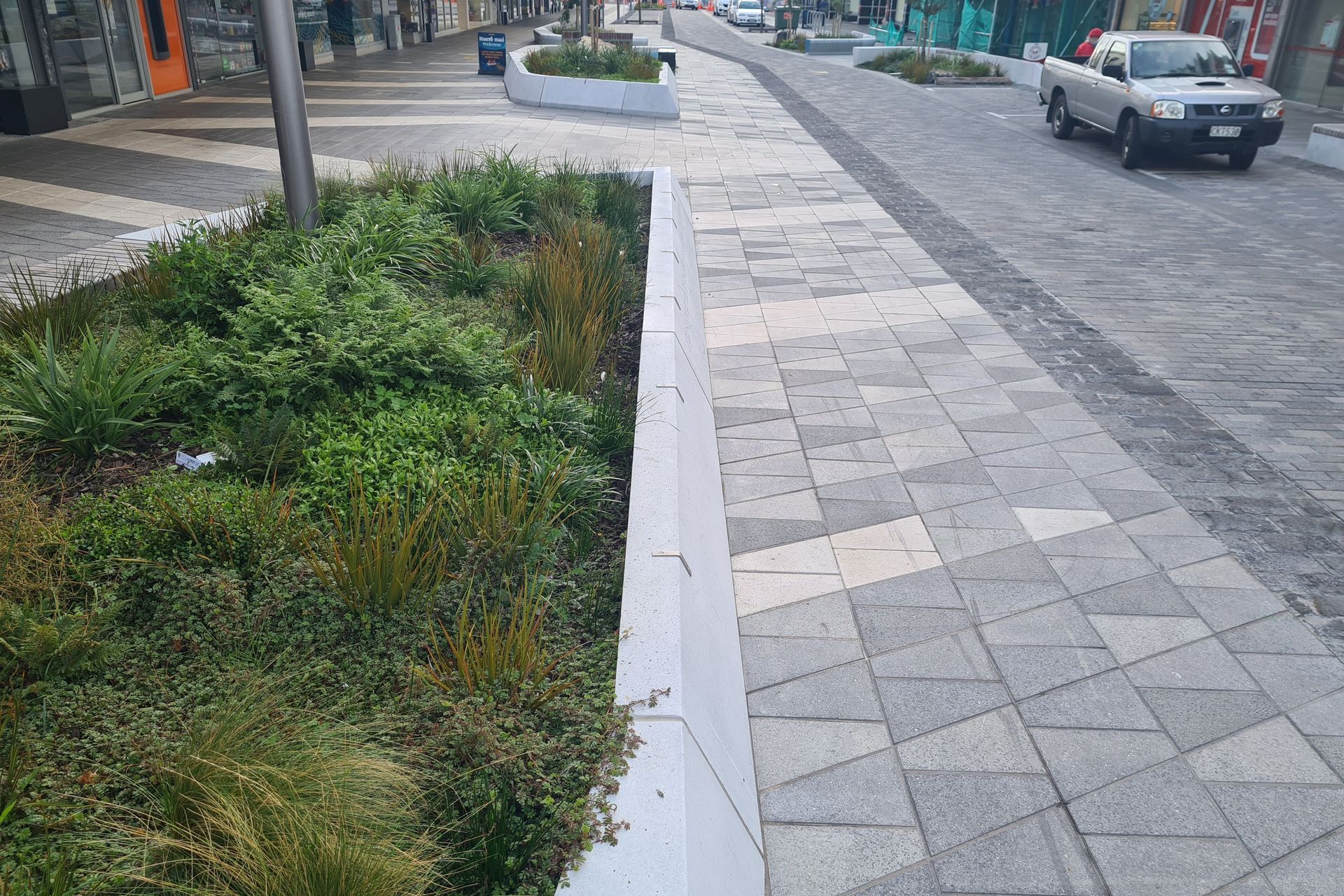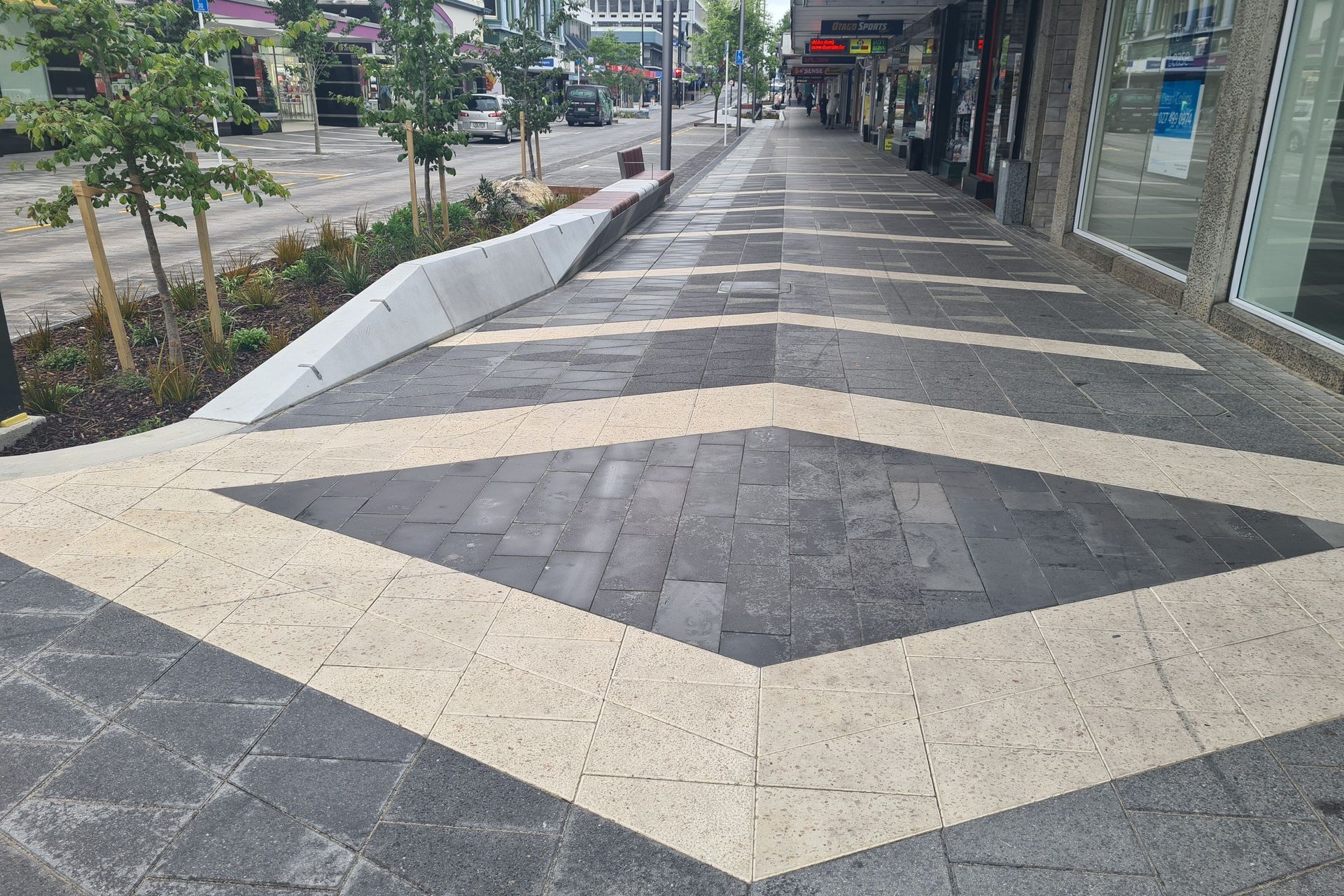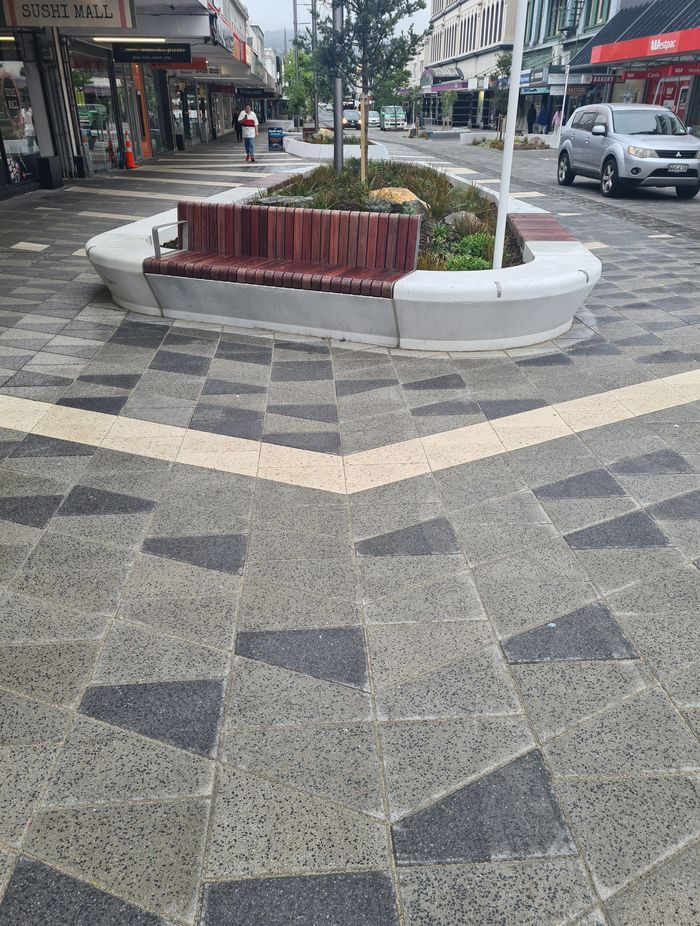A new main street that’s 100% Dunedin
Written by
13 April 2023
•
5 min read

Ōtepoti (Dunedin) has a unique and storied history. Many know the Scottish heritage of the city, which is evident in the architecture, but there’s also a rich cultural history from mana whenua, Kāi Tahu whanui, who settled there long before Europeans arrived on the shores of Ōtepoti. Dunedin is also recognised globally as a City of Literature and a hot spot for our local music scene.
When it came to the rejuvenation of the main street, , there was an opportunity to bring some of those important stories to the fore, and to give the public an opportunity to connect with Dunedin’s Māori history.
The Ō3 Collective – Jasmax, Aecom and Isaacs Construction – were tasked with the redevelopment in consultation with Dunedin City Council (DCC) and Aukaha, and they began with the meaning of Ōtepoti, with one key definition reflecting the corner weave pattern of the food basket (kete).
This symbol was extrapolated by the design team and informs the patterns of the paving, which is a key tenet of the redevelopment, given that it spans 15,000sqm.
The paving design helps tell local stories, with the paver, named ’The Poti Paver’, illustrating the history of the area from both a micro scale (the shape of the individual pavers themselves) to the macro scale throughout the street which is expressed through a unique series of patterns that connect George Street to the Otakau Marae through the Aramoana and Patiki designs.
Lead landscape architect Rob Lawry ( who still works alongside the Ō3 collective with his own company Studio3 Landscape Architects) says, “The authentic shape of the paver is a powerful way of providing a surface treatment that is contextual, meaningful and relates back to the principle of whakapapa.”
South Island-based masonry supplier and manufacturer Viblock were engaged to deliver the expansive paving solution, and Lawry says it was important that they could provide local product.
“We wanted to work with local aggregates, materials, and manufacturers, instead of importing stone from overseas. And we wanted the paver to be something that is 100% Dunedin – when you stand on the street and look at the ground plane, you have no doubt you’re in Dunedin as that paver and pattern is unique to this place.”


Viblock worked closely with the Ō3 collective to create a paver that met the unique design requirements and would stand the test of time (particularly important in a public space with high foot and vehicular traffic), and would meet strict roading standards.
Viblock general manager Jim Hunter says it was exciting to create a bespoke paver for the project.
“We discussed which shape would best reflect the pattern, and then created a custom made mould for the project. We also worked with the team around incorporating local colours and aggregates into the paver, trying many iterations until everyone was happy.”
The dry cast pavers came in several variations; the sand or “white” pavers used gold colour stone derived from Dunedin’s surrounding hills, and the light and medium pavers incorporated black stone from Dunedin’s Blackhead Beach.
Jim says Viblock loved the challenge of working with an innovative design team to provide customised designs with a materiality that was special to the local area.
“The great thing about dry cast paving is we have so much scope for customisation whether that be paving shapes, colours, textures, and aggregates used – there are endless possibilities. We love working on projects with clients and designers open to trying new things.”
Along with the customisation, the dry cast pavers also provide several benefits over imported stone, which is increasingly used in our civic areas around New Zealand.
“The reduction in ground preparation leads to a large drop in the embedded carbon of the project, without factoring in the positive environmental impact of not having to freight international products.”
Dry cast paving is laid directly on sand aggregates, which means reduced construction time, with less major ground preparation required, making dry cast paving is much faster to lay, which is a big factor when redeveloping urban environments.
“Another benefit is the reduction in cost; typically the cost for materials and installation is roughly a third of the cost of stone due to the sub-base requirements where stone needs a concrete base,” says Jim.


When it comes to ongoing maintenance of the streets, and unforeseen underground future events, such as burst water mains or power issues, dry cast paving also has a massive advantage due to its installation systems.
Currently, the project is halfway through the first stage and is getting great feedback from locals, who are embracing the storytelling aspect of their new main street.
Jim says he isn’t surprised Dunedin is proud of it, because it’s an area with a unique history and the paving reflects this.
“When you’re on the street you instantly get a feel that it's a unique area, because you won’t see anything like it in any of our other cities, and if people are interested in the design and start to drill into what it's about, it actually ties them more to their own local history, which is really awesome.”
Discover more exciting projects by Viblock